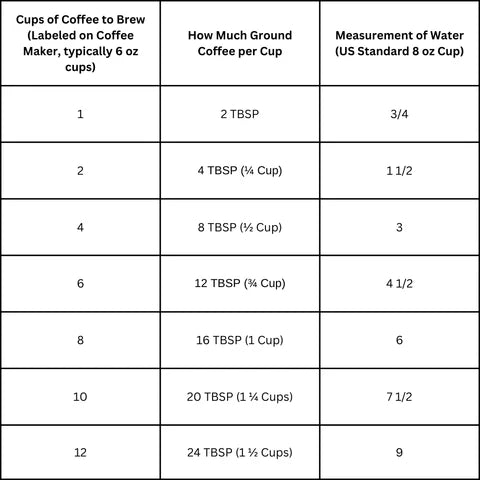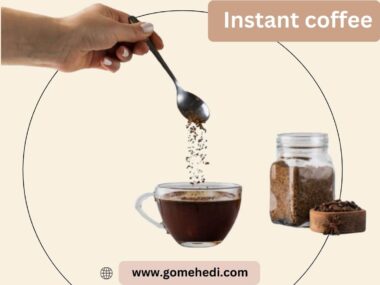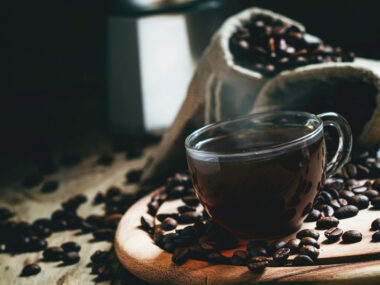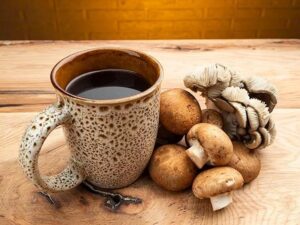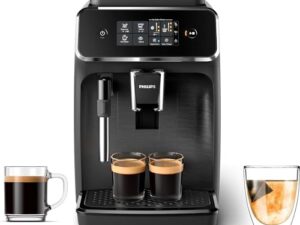Are you tired of brewing coffee that just doesn’t hit the mark? Maybe it’s too weak, or perhaps it’s so strong that it could wake the neighbors.
Finding the right balance for your morning brew can feel like an elusive art. If you’re aiming to make 10 perfect cups of coffee, understanding how much coffee grounds to use is crucial. Imagine waking up to the aroma of a perfectly balanced coffee, giving you that delightful start to your day.
This guide will unlock the secrets to achieving that ideal cup, ensuring you savor every sip. Stick around, and you’ll never have to guess your coffee measurements again. Let’s dive into the precise ratios that will transform your coffee experience.
Coffee-to-water Ratio
For making 10 cups of coffee, use about 50 grams of coffee grounds. This ratio ensures a rich, balanced flavor. Adjust according to taste preference for a stronger or milder brew.
The coffee-to-water ratio is a crucial factor in brewing a perfect cup of coffee. It dictates the strength and flavor of your brew. Whether you prefer your coffee strong or mild, understanding this ratio helps you achieve consistency and satisfaction with every cup.Understanding The Golden Ratio
The golden ratio for coffee is often considered to be 1:16. This means using one part coffee to 16 parts water. For 10 cups of coffee, you typically need about 60 grams of coffee grounds, which is roughly 12 tablespoons. Do you prefer your coffee on the stronger side? Try adjusting to 14 tablespoons for a bolder taste.Measuring With Precision
Using a digital kitchen scale can significantly enhance your coffee-making experience. Precise measurements ensure that each cup maintains the same taste. A scale also helps when trying different coffee types or brands that may have varying densities.Adjusting For Personal Taste
It’s okay to tweak the ratio to suit your taste. If you find your coffee too bitter, try adding more water. On the other hand, if it’s too weak, increase the coffee grounds slightly. Experimentation leads to discovering what you love most about your morning brew.Impact Of Coffee Type And Grind Size
Different coffee types and grind sizes can affect the outcome of your brew. Coarser grinds usually require more coffee, while finer grinds might need less. Have you ever noticed how espresso packs a punch with less coffee? That’s the power of grind size.Consistency In Brewing
Achieving consistency can be tricky but rewarding. Use the same coffee-to-water ratio each time, and note any changes in taste. This practice helps you refine your coffee-making skills and appreciate subtle flavor differences.Time And Temperature Considerations
Brewing time and water temperature also play significant roles. Water that is too hot can over-extract the coffee, leading to bitterness, while too cold can under-extract, resulting in a weak brew. Aim for a water temperature between 195°F and 205°F for optimal extraction. Are you ready to perfect your morning cup? Understanding the coffee-to-water ratio is your first step to mastering the art of coffee brewing.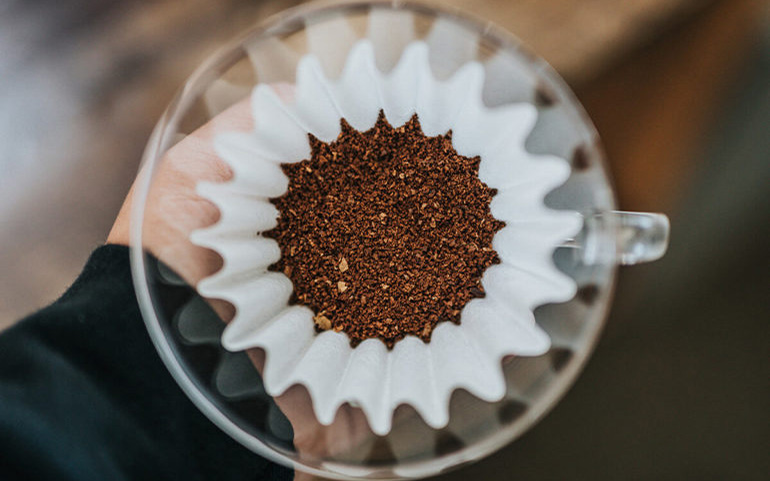
Credit: www.coffeefriend.co.uk
Measurement Methods
Brewing the perfect pot of coffee requires precision, especially when making 10 cups. As you stand in your kitchen, coffee grounds in one hand and a scoop in the other, you might wonder: how much is enough? Measurement methods play a crucial role in crafting that ideal brew. Whether you’re relying on volume or weight, each method has its merits and intricacies. Let’s dive into these approaches and discover which might be your go-to strategy.
Volume Measurement
Using volume measurement is common and straightforward. Grab a standard coffee scoop or tablespoon to measure your grounds. Typically, one tablespoon per cup is recommended. If you’re brewing 10 cups, aim for 10 tablespoons. It’s simple math and easy to remember.
However, coffee grounds vary in density. Some may be lighter, while others are more compact. Have you ever noticed how some scoops seem fuller than others? This can affect the strength and flavor of your brew. So, while volume is convenient, it might require a little tweaking based on your taste preferences.
Weight Measurement
For a more precise method, consider weighing your coffee grounds. You might use a kitchen scale for this purpose. Weighing ensures consistency, especially if you’re using different types of coffee beans. A general guideline is to use 10 grams of coffee per cup. For 10 cups, you would need 100 grams.
Think of weight measurement as a way to control the variables in your brewing process. It allows you to experiment and tweak the strength of your coffee without guessing. This method can be a game-changer, especially if you’re aiming for a specific flavor profile.
Which method suits you? Are you more of a volume person, who enjoys the simplicity, or do you lean towards weight for precision? Whichever you choose, remember that the joy of coffee is in the experimentation and personalization. What’s your perfect cup?
Types Of Coffee Grounds
Choosing the right type of coffee grounds is crucial for brewing perfection. Different coffee grounds affect the taste and strength of your coffee. Understanding the types can enhance your coffee experience.
Coarse Grounds
Coarse grounds look like sea salt. They are best for French press and cold brew methods. These grounds allow water to flow easily. This results in a smoother flavor. Less bitterness is present in coarse ground coffee.
Coarse grounds require a longer brewing time. The slow process extracts rich flavors. It is ideal for those who enjoy mild coffee. Coarse grounds are easily available in stores. They are perfect for lazy weekend mornings.
Fine Grounds
Fine grounds are powdery and resemble flour. They are used for espresso and Turkish coffee. Fine grounds pack more flavor in each sip. Quick brewing time suits busy schedules.
The rich taste appeals to strong coffee lovers. Fine grounds require precise brewing. They can be over-extracted if brewed too long. This can cause bitterness. Proper technique ensures a delightful cup.
Fine grounds offer a robust coffee experience. Their intense aroma fills the room. Ideal for those who need a strong caffeine kick.

Credit: www.pinterest.com
Brewing Techniques
Brewing the perfect cup of coffee is an art. It involves balancing the right amount of coffee grounds with water. This balance ensures a flavorful and aromatic cup. Different brewing methods require different techniques. Here, we explore how much coffee grounds you need for 10 cups. Each method has its own unique approach.
Drip Coffee Maker
Drip coffee makers are common in many homes. They are easy to use and produce consistent results. For 10 cups, use about 50 to 60 grams of coffee. This is roughly 10 to 12 tablespoons. Adjust to taste, as some prefer stronger coffee. Ensure the coffee is medium grind. It allows for proper extraction.
French Press
The French press offers a rich and full-bodied coffee. For 10 cups, use 80 grams of coarse coffee grounds. That’s about 16 tablespoons. Coarse grounds prevent clogging the filter. Steep the coffee for about 4 minutes. This method allows the natural oils to infuse.
Espresso Machine
Espresso machines are for those who love intense flavors. To make 10 cups, you need about 160 grams of finely ground coffee. This is around 32 tablespoons. The grind should be fine, almost like powder. Compact the coffee firmly in the portafilter. This ensures a strong, rich brew.
Factors Affecting Taste
Brewing the perfect cup of coffee is an art. Taste depends on many factors. Coffee grounds play a big role, but they aren’t the only factor. Different elements can change the flavor of your coffee. Let’s explore some key factors that affect taste.
Water Quality
Water quality is crucial for good coffee. Use fresh, clean water. Tap water with high minerals can alter taste. Filtered water is often better. It provides a cleaner, purer flavor. Your coffee will taste better with good water.
Brewing Time
Brewing time affects coffee strength. Short brewing time makes weak coffee. Longer brewing time makes it strong and bitter. Balance is key. Aim for 4 to 5 minutes. Experiment to find your perfect taste.
Adjusting For Personal Preferences
Coffee lovers know that brewing the perfect cup is an art form. Adjusting the amount of coffee grounds for 10 cups isn’t just about following a rule; it’s about crafting the experience that suits your taste. Whether you enjoy a bold, intense flavor or a lighter, smoother sip, there’s room for personalization. Let’s explore some factors you might consider when tailoring your brew.
Strength Preferences
Do you like your coffee strong and robust? Or do you prefer a milder taste that lets you savor the subtle notes? The standard ratio is about two tablespoons of coffee grounds per cup. But if you love a strong brew, you might increase this to three tablespoons.
Consider experimenting with different ratios. Try brewing a few batches with varying amounts. Taste each and note which one satisfies your cravings. It’s all about finding what wakes you up in the morning or what comforts you after a long day.
Flavor Additions
Adding flavors to your coffee can be a delightful way to enhance your drink. Think about spices like cinnamon or cardamom. Or perhaps you enjoy a hint of vanilla or chocolate.
Mix these directly into the coffee grounds before brewing. Start with a small amount, maybe a teaspoon, and adjust according to your taste. Adding flavors can transform your coffee experience without overpowering the natural aroma.
Have you ever tried a pinch of salt in your coffee? It can reduce bitterness and bring out a richer taste. Try it once, and you might just add it to your morning routine.
How do you prefer your coffee? Do you think experimenting with flavors could lead to your next favorite blend? Personalizing your coffee is not only a fun journey but also a rewarding one. Let your taste guide you to the perfect cup.
Common Mistakes
Brewing coffee is an art that can easily be marred by common mistakes. When you’re aiming to make ten cups of coffee, the ratio of coffee grounds to water is crucial. But what happens when you get it wrong? You might end up with a brew that’s either too bitter or too bland. In this section, we’ll dive into the pitfalls of over-extraction and under-extraction, helping you avoid these mistakes and brew the perfect pot.
Over-extraction
Over-extraction occurs when coffee grounds are steeped for too long or when there’s too much coffee for the water ratio. You might have experienced this when you took a sip and found your coffee overwhelmingly bitter. It’s like biting into the darkest chocolate without the sweetness to balance it out.
One cause of over-extraction can be using a grind that’s too fine for your brewing method. A French press requires a coarse grind, whereas a drip coffee maker might need medium grind. Mismatching these can lead to bitterness. Pay attention to your grind size.
Another common mistake is adding more coffee grounds than necessary. You might think more grounds equal stronger coffee, but it can lead to an overly bitter brew. Stick to the recommended two tablespoons per cup.
Under-extraction
Under-extraction is the opposite problem. It happens when coffee grounds are not steeped enough or there’s not enough coffee for the water used. This can result in a flat, sour taste that lacks depth and flavor.
If you’ve ever brewed coffee that tasted weak or watery, you might have fallen into the trap of under-extraction. Perhaps you were in a hurry and used less coffee than needed, hoping to stretch your supply. This often leads to disappointment.
A common cause is using a grind that’s too coarse for the method, leading to a quick brew that doesn’t capture the full flavor. Ensure your grind matches your brewer’s needs to capture the essence of your coffee.
Getting the balance right might seem daunting, but once you nail it, your coffee will sing with flavor. Are you ready to refine your brewing skills and avoid these common pitfalls?
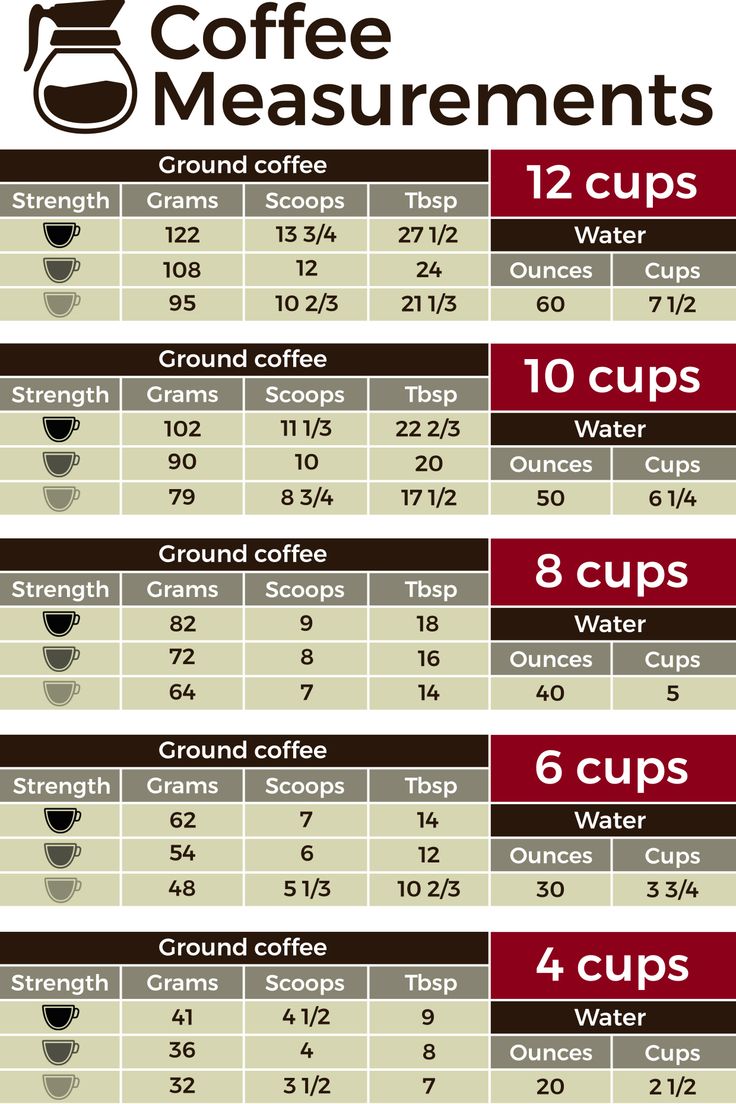
Credit: www.umamicart.com
Frequently Asked Questions
How Much Coffee Grounds Do I Use For 10 Cups Of Water?
Use 1 to 2 tablespoons of coffee grounds per cup. For 10 cups, use 10 to 20 tablespoons. Adjust to taste preference.
How Much Folgers Coffee For 10 Cups?
Use 10 tablespoons of Folgers coffee for brewing 10 cups. Each tablespoon serves one cup, ensuring rich flavor. Adjust to taste preferences for stronger or milder coffee. This guideline helps achieve a balanced brew, suitable for most coffee makers. Enjoy the perfect cup every time!
How Much Coffee For 10 Cups Calculator?
For 10 cups of coffee, use approximately 60 grams (about 2 ounces) of coffee grounds. This equals around 10 tablespoons or 2/3 cup. Adjust for taste preferences. Use fresh, quality beans for best flavor.
How Much Coffee Grounds For 12 Cups Of Coffee?
Use 1 to 2 tablespoons of coffee grounds per 6 ounces of water. For 12 cups, use 24 tablespoons. Adjust to taste preference. This ratio ensures a balanced and flavorful brew.
Conclusion
Finding the right coffee grounds for 10 cups can be simple. Use two tablespoons of coffee per cup as a guide. This makes the flavor rich and satisfying. Adjust based on personal taste preferences. Some like it stronger, others milder.
Experimenting is key. It leads to discovering your perfect brew. Always store coffee grounds in a cool, dry place. This keeps them fresh and aromatic. Enjoy the art of coffee making. It’s a delightful experience every morning. Savor each cup with friends or in solitude.
Happy brewing!
